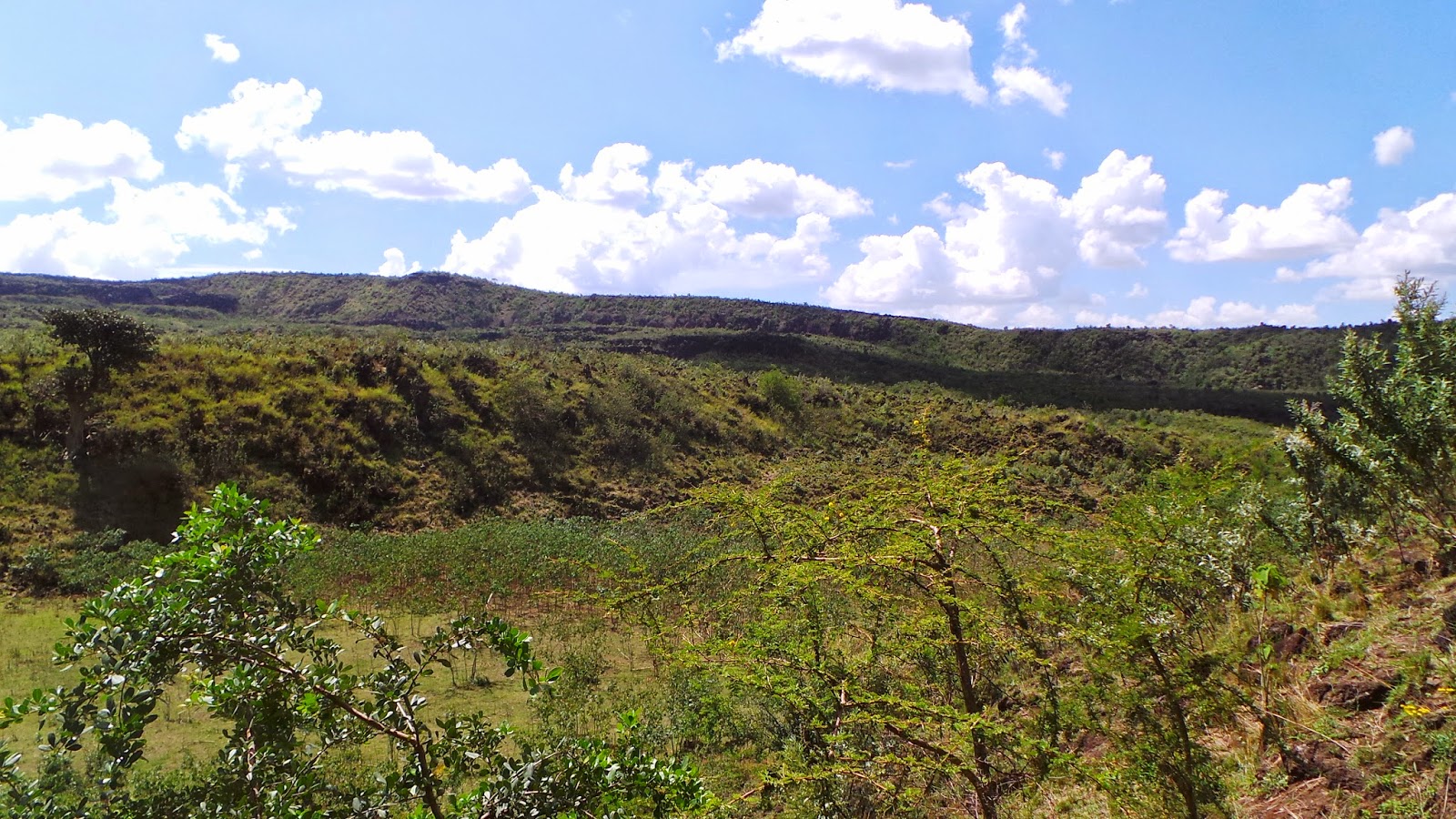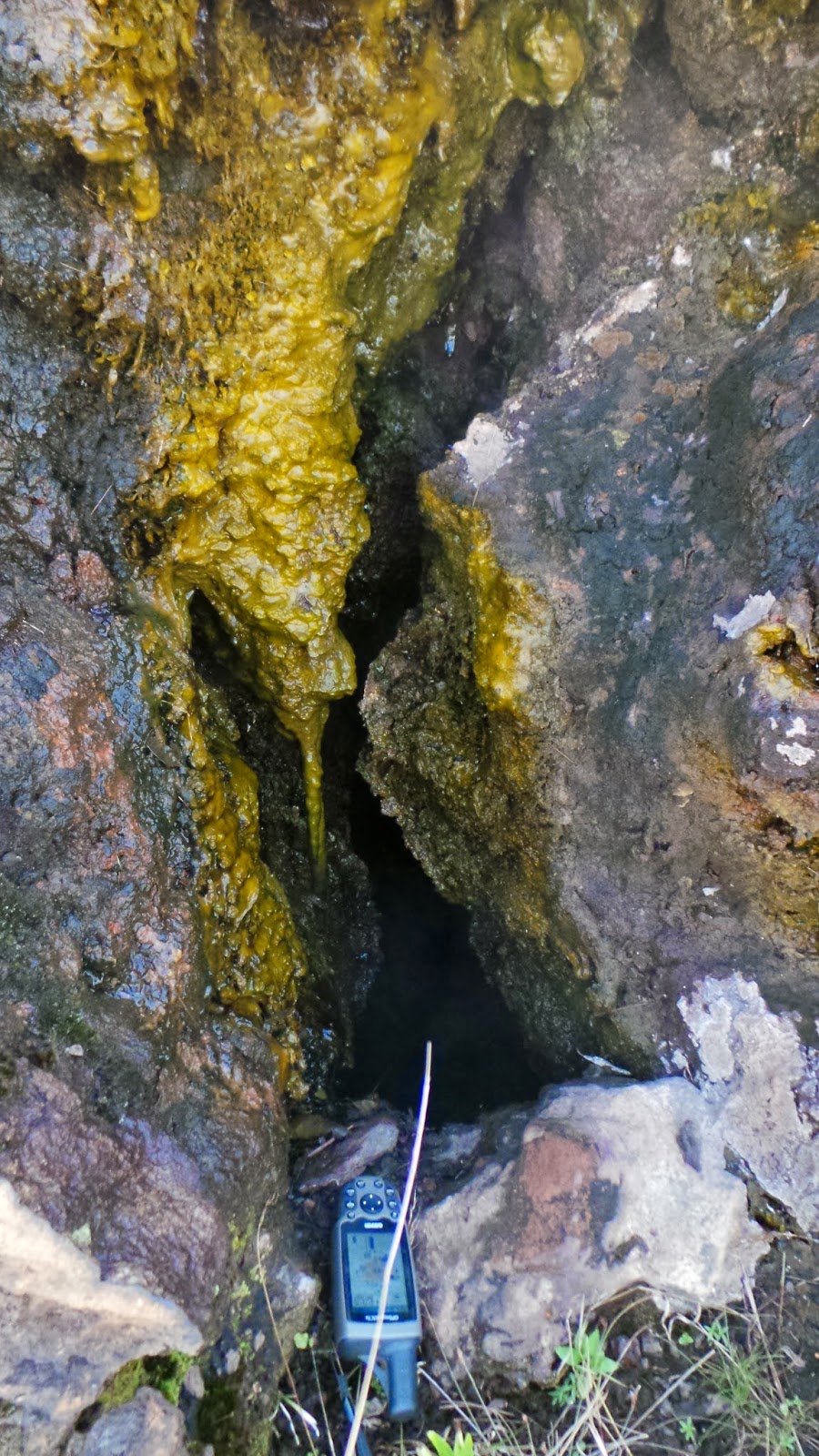Today was the last day in the caldera. The end of our time
here has almost arrived. I have had the most amazing time, met some amazing
people who I will stay in touch with and the caldera has most certainly been
the hardest field location I have worked in to date. I can’t wait to come back
next year! I suspect there will be a few tears tonight and tomorrow when we
leave. Most of the staff are coming in tonight to say good bye.
Me, Jenny, Florence and chef Samuel. This was a teary good bye, thanks to Flo!
Security check point!
Firstly, we went to visit Great Rift Drilling’s Rig 1, owned
by Cluff Geothermal, now that it is fully constructed. It’s a much smaller set
up than the rig we visited on Day 2. Hydraulics are used to control the drill
string in this case. It is much more compact, takes 4 days to take down, move
and reconstruct; compared to the 21 days for the larger rigs owned by GDC. They
also cost a tenth of the cost to move compared with the GDC rigs. The amount of
water used is vastly reduced with these rigs as more often than not, air is
used to lubricate and to raise drill cuttings to the surface. The only time water
is used to excess is when the lithology is very loose or unconsolidated. This is when cave ins, or sluffs, occur within the drilled hole. Mud contributes to keeping
the lithology where it is, stopping debris filling the bottom of the hole. In
this instance, when the water and mud returns to the surface, it is sieved so
it can all be reused. These rigs can drill to 3000m, in comparison to 7000m for
the larger rigs. However at Menengai, the maximum depth is 3200m, which was a
one off. The rig can also case to 2000m. It is packed with wireless technology,
meaning it takes less manpower to work and control and it is overall more
accurate. All in all it is a much more cost effective piece of equipment and
brilliant with it! There are currently four in the world, so the viability of
the rig in this location is being tested. It is an amazing bit of kit,
incredibly impressive!
Cluff Rig, Great Rift Drilling 1
Cluff Rig, Great Rift Drilling 1
My remote control toy is bigger than yours! At the drill controls.
While talking to Jeff the rig manager, he told us about a
problem they encountered while drilling the proposed well MS-14. They took the
drill to 600m and began to cement the hole. But the cement didn’t seem to do
its job, it just seem to disappear in to the hole. When he described the
cuttings that were coming to the surface it sounded like tuff. The description
was brown light weight pebbles, sometimes broken up. It may have been the
pumice fall out associated with early stages of tuff deposits. The porosity of
this could certainly explain why the cement didn’t do its job. It would also
potentially explain why we haven’t seen deposits within the caldera associated
with its collapse.
The next task of the day was to return to the fault in the
NW corner of the caldera, discovered on Day 10. As access to the caldera walls
has been limited I wanted return to this location to try and collect more
structural data. More fractures were measured. We also discovered a fault plane
that had a different trend to the one measured on Day 10. It had the same pale
hardened coating of what is likely to be clay. It also had large slickenlines
which were also measured. I am still playing around with what this fault might
mean as it hasn’t been recorded in any literature. The different trends of the
fault(s) may be because the fault is scalloped and is part of a small collapse
of the NW crater. Or it may be two different faults and have nothing to do with
any collapse. What we did notice was how unstable the area is. Since our last
visit just 9 days ago, more of the cliff has collapsed on to the road making
access with the car even harder. So we didn’t spend too much time there.
This was followed with a quick visit to the fumaroles by
well MW-10 where we cooked breakfast. I just wanted to collect samples of the
altered rock to analyse. We also went back to the second set of fumaroles
discovered on Day 13. I wanted to check the surface above the fumaroles to see
if there were any emanations higher up. There were small ones that weren’t too
hot, the alteration of the rocks was less and they were close to a large
fracture that may have been a low energy fissure. There were also elongate
depressions along the surface that may be fractures that have not quite
propagated to the surface, but the surface trace is due to land subsidence in to
the fractures.
I have unexpectedly got involved with Ujima Foundation while
here. An amazing charity that gives young men and women from the local
communities a chance to train in the hospitality industry. The trainees are
usually those who have had a struggle in life and may never have had the
opportunity to escape from hardship if it wasn’t for the foundation.
Lillian
Tomorrow, we are off to Lake Bogoria, in part a day off, but
we won’t be able to help ourselves, we will still find geology to look at.
There is little to no understanding as to why the flooding has occurred and
Lake Bogoria is not the only lake that has flooded. All the EAR lakes in Kenya
have flooded and some in Ethiopia are demonstrating the same. One thought is
the continuing stretching and thinning of the crust has resulted in fracture
and/or fault propagation downwards in to the aquifers. Hydrothermal fluid
contamination has been recorded in two lakes in Ethiopia.



















































